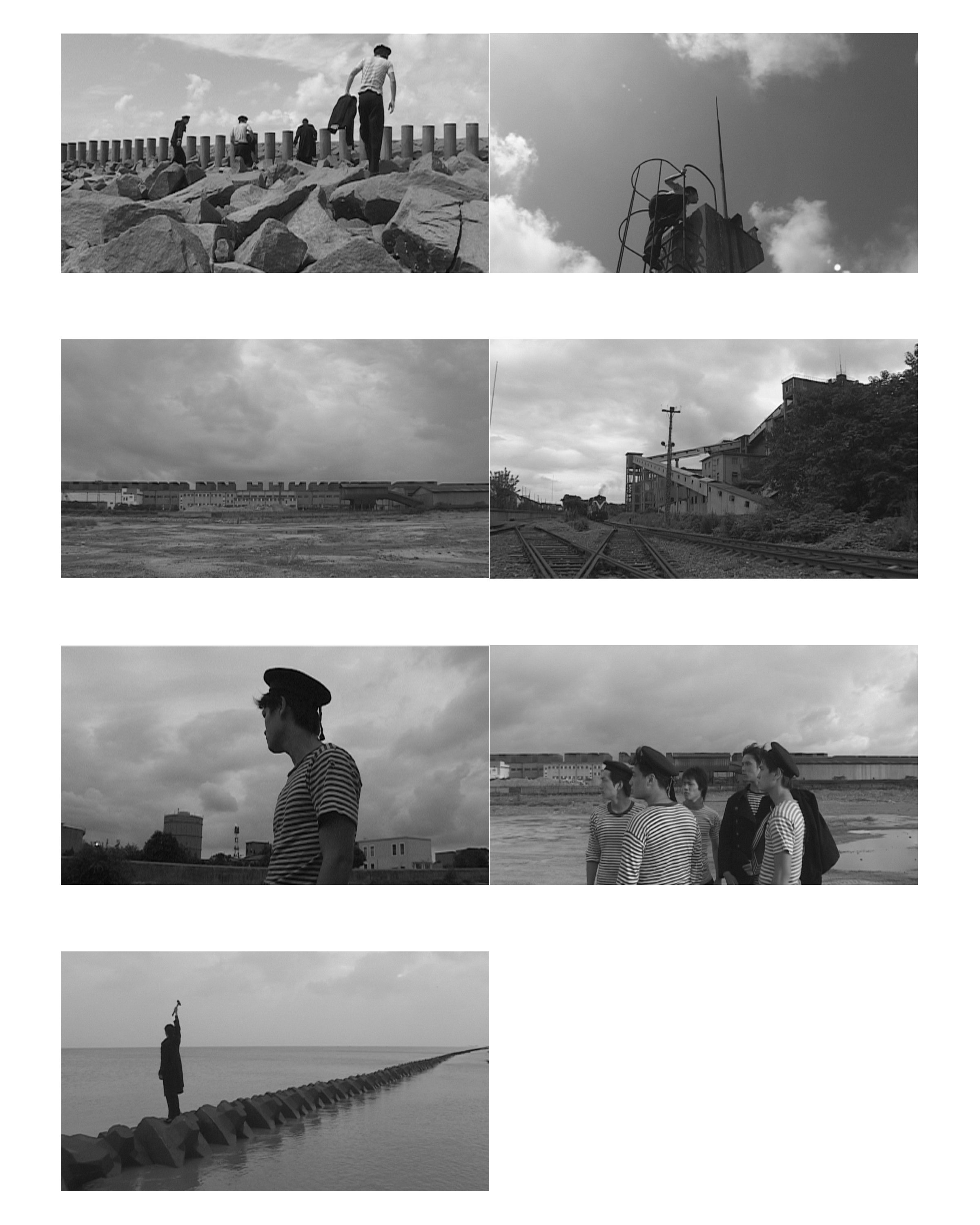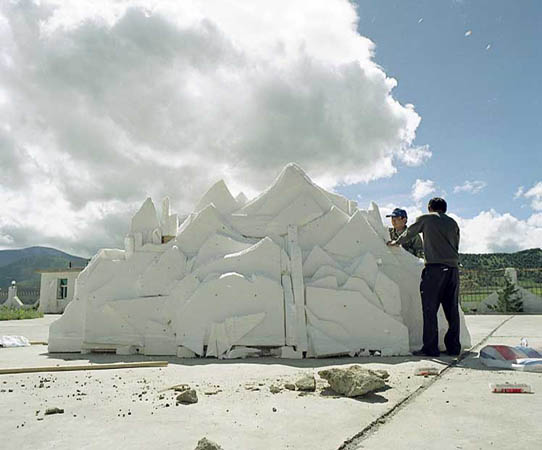
© » KADIST
Chia-Wei Hsu
Marshal Tie Jia (Turtle Island) explores the history of a tiny island off of the coast of Matsu in the Taiwan Strait that has been instrumental in the geopolitical relationships between China, Taiwan, and Japan. The Chinese frog deity, Marshal Tie Jia, is now exiled to the island where he is still revered by the Taiwanese people. The installation includes documentation of the artist’s correspondence with the frog deity placed upon an altar, while the video explores both Marshal’s birthplace in China and his current home on Turtle Island.

© » KADIST
Leung Chi Wo and Wong Sara
Photojournalist with Two Cameras restages a portrait of a photojournalist from the background of an old photograph of protest published in South China Morning Post on January 10, 2010 under the headline “Return of the Radicals: Recent angry protests are nothing new.” The photojournalist in the photograph, probably from a protest of earlier decades, was capturing the scene of a protester’s arrest while wearing two cameras. January of 2010 was a time of pro-Democracy demonstrators called for the release of activist Liu Xiaobo, drafter of the Charter 08 manifesto calling for the end of authoritarian rule, was sentenced to 11 years in prison one month earlier. Leung’s isolating and highlighting of the photographer by bringing him from the original photograph’s background to the foreground of his studio shot calls attention to the two older cameras and the journalist’s retro-style clothing.

© » KADIST
Lu Chunsheng
Lu has developed an oeuvre that consists of characters in bizarre situations. The large-scale photograph I Want to Be a Gentleman depicts nine men standing like statues on display in a museum on tall plinths in front of a run-down industrial building. Lu’s brooding films and photographs are preoccupied with China’s industrial era and communist history.

© » KADIST
Chen Shaoxiong
After engaging primarily with video and photography for more than a decade, Chen turned to painting to explore the issue of urban change and memories—both personal and collective. This “return to origin” reveals an interesting critical reflection on the interactive relation between outside change and internal reflection, and the possibility for more experimental approaches that revive “traditional media.” For Ink Diary , Chen recorded his daily life and impressions within a rapidly-changing urban setting in ink wash paintings which he then turned into an animated film. The complex result of this simple process is both highly innovative and reflective of modernization.

© » KADIST
Lu Chunsheng
A mesmerizing experience of a vaguely familiar yet remote world, History of Chemistry I follows a group of men as they wander from somewhere beyond the edge of the sea through a vast landscape to an abandoned steel factory. Using long shots and atypical settings, Lu Chunsheng enigmatically refers to a distant history while conveying the sense of dislocation wrought by successive stages of modernization. The combination of elaborate landscape shots from the suburbs of Shanghai and Lu’s signature style of spare and minimally crafted acting offers a surreal view of human behavior in spaces marked by the hulking remnants of China’s extraordinary development.

© » KADIST
Patty Chang
The video “Shangri-La” refers to the mythical city of James Hilton’s novel “Lost Horizon” written in 1933 and is exemplified in a film by Frank Capra which speaks of eternal youth in a city of happiness. In 1997, a small town in an agricultural region of central China near the Tibetan border was proclaimed as the place that inspired Shangri-la. Thereafter, a dozen other cities in the same area have claimed to be paradise on earth, prompting a marketing battle without mercy, raging on until the government’s intervention.
Lu Chunsheng
- location: Shanghai, China
- year born: 1968
- gender: male
- nationality: Chinese
- home town: Changchun, Jilin province, China
Patty Chang
- location: New York, New York
- year born: 1972
- gender: female
- nationality: American
- home town: San Francisco, California
Chen Shaoxiong
- location: Beijing
- location: Guangzhou, China
- year born: 1962
- gender: male
- nationality: Chinese
- home town: Shantou, Guangdong Province, China
Chia-Wei Hsu
Embarking from myriad audio-visual narratives, Chia-Wei Hsu pursues imaginative interrogations of cultural contact and colonization in Asia, oftentimes amalgamating his primary narratives with non-human actors including technologies, animals, gods, environments, traditions, and material objects...
Leung Chi Wo and Wong Sara
Leung Chi Wo tends to highlight in his art the boundaries between viewing and voyeurism, real and fictional, and art and the everyday...
-
2000-2009
Lu Chunsheng
2004A mesmerizing experience of a vaguely familiar yet remote world, History of Chemistry I follows a group of men as they wander from somewhere beyond the edge of the sea through a vast landscape to an abandoned steel factory...
Chen Shaoxiong
2006After engaging primarily with video and photography for more than a decade, Chen turned to painting to explore the issue of urban change and memories—both personal and collective...
-
2010-2019
Leung Chi Wo and Wong Sara
2010Photojournalist with Two Cameras restages a portrait of a photojournalist from the background of an old photograph of protest published in South China Morning Post on January 10, 2010 under the headline “Return of the Radicals: Recent angry protests are nothing new.” The photojournalist in the photograph, probably from a protest of earlier decades, was capturing the scene of a protester’s arrest while wearing two cameras...
Chia-Wei Hsu
2012Marshal Tie Jia (Turtle Island) explores the history of a tiny island off of the coast of Matsu in the Taiwan Strait that has been instrumental in the geopolitical relationships between China, Taiwan, and Japan...




